By Annie Nolan
Bachelor of Arts, majoring in geography and government & international relations

The edge of the Deonar dumping ground, Asia’s largest rubbish tip, is lined with informal settlements, fruit vendors and rickshaws. Standing on this street, as on many others in Mumbai, I am struck by the lack of women. As we have explored Mumbai in our free time, I have repeatedly marvelled at how few women there are in some public spaces. But our time in class has helped offer an explanation.
In sessions with TISS academics and class discussions we have been learning about the social structures which inform the Indian context and shape the nation’s pathway towards development. For example, the caste system which has shocked, infuriated and fascinated us all. We have also discussed the role of gender at length – including social attitudes towards women and the profound effect these have on development.
Gender inequality in India is pervasive and it affects women in various ways throughout their lives. Discrimination begins in gestation, as natality inequality is a growing problem with a female to male ratio at birth of 900 females per 1000 males in 2015. This is the result of sex specific abortions and parental preference for boys. Gender inequality also impacts on women’s access to education which is reflected in the nations literacy rates as 64% of females are literate compared to 80% of men. In addition, gendered discrimination increases vulnerability to violence in both the public and private sphere. Such inequality has a far-reaching negative effect on society as a whole.
My initial observation that there are few women in some public spaces now seems an obvious product of social attitudes towards women and the subsequent restrictions placed on women’s mobility. Yet, despite the many challenges Indian women face I have also seen reason to be hopeful for the future. Personally, I have noticed that by contrast to certain public spaces young women move freely on TISS campus and occupy half the student population. Whilst visiting the Mumbai headquarters of the voluntary development organisation Youth for Utility and Voluntary Action (YUVA) I was encouraged by their programs to support and empower women and children. Through the media I have watched on as in the state of Kerala two women; Bindu Ammini, and Kanakadurga, entered the Sabarimala temple which women have historically been banned from entering. In doing so they defied entrenched social values and sparked the formation of a 620km human chain in support of gender equality.
Despite my optimistic outlook, it is impossible to know whether India will rise to meet the significant challenge it faces in achieving gender equality. What is clear, is that it is extremely important for the whole of society that gender equality improves.
Today’s Four-Caste: Untangling the social climate of India
By Kieran Bonin
Bachelor of Secondary Education/ Bachelor of Arts (History and Geography)
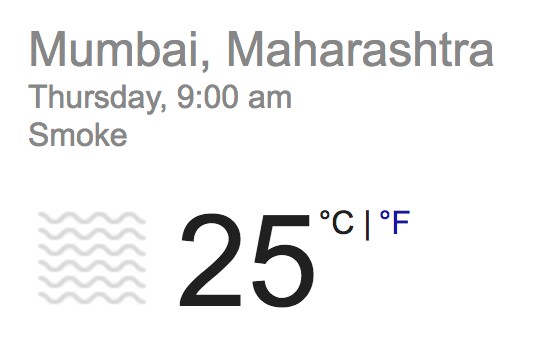
When googling the weather for Mumbai to select clothes for this trip, to my confusion it read ‘smoke’ – something I had never seen before. Although India is filled with many surprises, the biggest to me was the caste system that is entrenched into its culture.
If you are like me and have no idea of the caste system that is practiced in India, I will give you a very brief crash course. The traditional theory is that the Hindu God Brahma created four castes of people from his body; the Brahmins come from the head, Kshatriyas the arms, Vaishyas the legs and Shurdras the feet. The Dalits were an added fifth group which are outcasts in society. Each caste has a different attribute and are suited to particular jobs, for example the higher caste Brahmins come from the head and therefore are teachers or priests. The Dalits who come from the feet do the unwanted jobs such as street sweeping. Individuals keep to their own caste group. You are stuck with your caste and marrying outside of it may result in death.
While sitting in my fourth lecture in Mumbai I had a lightbulb moment that I am almost embarrassed to admit as a geographer. When looking at issues in India I had fallen into the trap of placing Indian culture into the same frameworks I use to understand Australian issues. I could not have been more wrong. You cannot understand how a country works without understanding its culture and social dynamics. This is the problem of studying other regions and cultures inside a classroom in Camperdown. How can one understand gender discrimination or widening wealth gaps in India when not understanding the dynamics of Indian culture? After a few days I discovered that most issues in India can be connected to the caste system. Being able to be in the country and experience its culture first hand has made it easier to see the complex social system that Indian policy is challenged with. This is something I would not have picked up as quickly if I were doing the same course in Australia.
In 2003 a report named Vision Mumbai suggested that one step to move Mumbai into a world class city would be to stop new slums forming. However, when planning cities and creating polices it is important to first understand the social dynamics and processes like the caste system to avoid oversimplification. This idea is relevant to an Australia context in that urban, rural and remote areas are all different and policy needs to be dynamic to cater for their dynamic nature.
As the smoke settles and my grasp of the caste system improves, my understanding of the complexities of India will as well.
A Tale of Two Cities
By Patrick Loughrey
Bachelor of Arts (Political Economy/Government & International Relations)
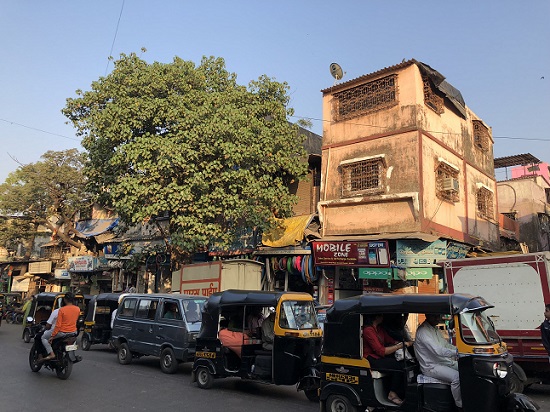
Mumbai is a city riddled with contradictions. On first arrival the modern airport terminal, complete with western food chains and modern amenities, juxtaposes uneasily with the informal settlements we pass on our way to the Tata Institute for Social Sciences. It seems a sharp contrast to have such deprivation co-exist alongside such wealth. Indeed, it appears as though two cities exist alongside each other in an uneasy relationship. The modern Mumbai, populated by vast wealth, European cars and American chain stores sits uneasily alongside the majority. This Mumbai, the Mumbai of the majority, is filled with street vendors & informal workers. The political economist within me wonders what causes such drastic inequality, and how can it be overcome?
In our first few days lessons with local academics have framed our discussions with the caveat that ‘nothing in India is simple’. The scale, complexity, and diversity of India means there can be no easy answers. Such complexity defies simplification. During our introduction to the caste system it seems as though the realities of social relations, much like any western economy, can explain the vast inequality I have seen. But social relations within India are not merely economic, as in the west, but intersect across social and religious hierarchies. The Caste system can be best described as having your position within the social hierarchy determined from birth. You enter a complex set of social relations that in turn largely determine the trajectory of your life: including employment, marriage and education. From my own western liberal zeitgeist such ideas seem alien, an anathema to my own concept of equality. This inequality manifests itself within the urban space of Mumbai which is itself not neutral, instead it actively produces and reproduces the social relations rooted within caste and embeds the pre-existing inequality through a feedback loop. Inhabiting these spaces is an eye-opening experience, walking through an informal area such as Shivaji Nagar and Chembur, the scale and pattern of inequality is clear.
The Constitution of India asserts in its preamble that equality of status and opportunity is guaranteed, however, the realities of caste and inequality seems to fly in the face of such assertions. Though the law seems to reflect egalitarian concerns it is within the social sphere where cultural norms are actively reproduced. The begs the question, how can Mumbai manage its development, addressing its inequality and ensure inclusivity? To what extent will this challenge be hindered by social norms such as Caste. How can the aspirations of modern India, an emerging global power, be reconciled with its own values. Perhaps it can only be done by ‘always looking to the future’ as a local shopkeeper put it to me. He managed to succinctly capture the essence of this clash, that only time will beget outcomes. Perhaps then it is too early for me to make firm conclusions on the true nature of inequality, after all to reduce Mumbai’s inequality into the neat reduction of caste, defies the complexity and specificity that any nuanced discussion demands. What remains certain is that Mumbai is a city in flux, the old and the new vie for space. Managing the challenge of inclusive development will be immense and the correct path may not yet be determined. Only time will tell, but with the right outlook anything is possible.
Is Mumbai going to drown?
By Matt Bailey
Bachelor of Science and Bachelor of Commerce
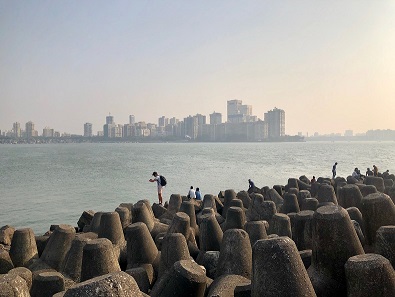
Among the chaos of Mumbai, spatial constraints have led to wildly creative ways of people using space. To me, nothing seems fixed, the wonderfully disorderly city feels like an evolving entity. The dynamic megacity regularly endures monsoonal flooding. Vast informal squatter settlements are swamped, yet defiantly recover time and time again. However, with climate change and mean sea level rise, storm surges, cyclonic and flooding events will increase in both intensity and frequency. I wonder how resilient Mumbai will be in the next few decades.
Originally a cluster of islands, a large portion of Mumbai is now situated on low-lying, flood-prone reclaimed land. Compounding influences of rising sea levels and increased rainfall will cause dramatically increased flooding, infrastructure damage, threaten water security, compromise sanitation, pose risks to health and introduce new conflicts over land. Over the course of the century, sea-level rise will place at least half of Mumbai’s population (roughly 10 million people) at clear threat.
Particularly at risk are those living in informal squatter settlements situated on mud flats and estuaries. These communities are among the most densely populated areas in the world and lack any sort of formal stormwater system. Even in the areas which have waterways, I notice they contain large amounts of plastic rubbish and debris which would no doubt cause clogging during the floods. Squatter residents will be the first people to be impacted. I’m not optimistic about how resilient these settlements will be to future changes in sea level and flooding intensity, compounding on existing coastal instability.
I have found several references to Mumbai’s flood and coastal risk management strategies, but these seem inadequate given the size of the problem. In the picture above is the tetrapod seawall we visited along the waterfront of Marine Drive in Mumbai. Prior to its urban development, the coastlines of Mumbai would have been protected from tides by mangroves. In their absence, a seawall is effective – excellent for dissipating wave energy at current sea levels – but a ‘band aid’ solution nonetheless. There is no sign Mumbai will reduce or slow further development on its unstable coastline. Planned encroachment into mudflats and mangroves compromises these natural drainages and flood controlling mechanisms.
As India’s economic powerhouse, the implications of Mumbai’s coastal exposure are significant. Vulnerability is a measure of not only exposure to the risk but the gravity of consequences for the densely populated megacity. This bustling city is ever adapting, but as of now it lacks the planning, investment and political will to safeguard its future. Mumbai, it seems, reflects Rajendra Pachauri, Chairman of the Intergovernmental Panel on Climate Change, opinion that “On a scale of 0 to 10, India scores a poor 0.5 in preparedness for the effects of climate change that could include severe water scarcity, floods, drought and mass migration”.
An Indian field school for political economy and geography students in India
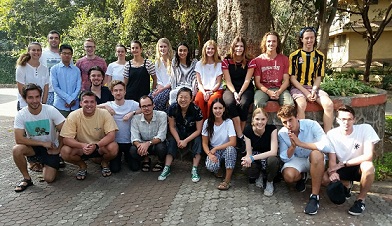
Twenty-two students majoring in political economy and geography have arrived in Mumbai for a three week intensive field school experience. The field school is run by the Departments of Political Economy and Geography in collaboration with Indian university, the Tata Institute of Social Sciences (TISS). The field school involves an intensive, integrated three-week program of classes and field visits addressing the political economy of development and environmental management in modern India. Students are engaged by Indian scholars and civil society groups working on issues of geo-political, economic and environmental importance and gain firsthand insight into the challenges facing one of the most important nations in the contemporary global economy.
The first week of the program will be run at the TISS campus in Mumbai. Students will stay on
campus at the Tata Institute of Social Sciences and participate in tailored classes and city field visits
developed by the local academic staff, in close collaboration the University of Sydney convenors.
This component of the field school will address India’s ‘national story’ of development and inspire
questions about the contested process of economic development, environmental sustainability and
social inequality.
In the second and third weeks of the program involve travel to the southern state of Kerala. We will
fly to Kozhikode, also known as Calicut, and then travel by bus to the rural district of Wyanad. Our
partners, TISS Kerala, have undertaken social audits of this district and they will join us in visits to
villages where we will learn about the contested relationships between economic development, human security and ecological sustainability in this region. We then travel back to Kozhikode to visit
local fishing communities. Researchers from TISS Kerala will brief us on work they have been doing
on the sustainability of coastal fishing communities, during field site visits. Then, we will take a train
trip from Kozhikode to the historic city of Kochi (also known as Cochin) to look at the effects of
tourism and urban development, and then head up to the famous tea plantation districts near the
town of Munnar, to examine how this industry has been affected by economic restructuring and
globalisation. The final leg of our journey then takes us to the city of Allepey to investigate the
effects of flooding, and then to Kerala’s capital, Thiruvanathapuram (also known as Trivandrum), for
seminars with policy‐makers and researchers on Kerala’s story of development and sustainability.
We will also make a field visit to the Laurie Baker Centre for Habitat Studies, where will we learn
about affordable and environmental housing. During our time in Trivandrum, we will be staying at
the Sagara Resort Hotel in Kovalam Beach, just 20km outside of the city. This hotel was designed by
architects working with the Laurie Baker Centre, and incorporates eco‐friendly design principles. Our
final destination is Kanyakumari, the southernmost tip of the peninsula, where we can dip out feet in
the water at the very extreme end of India.
The blog posts that follow will capture the student experience of contextualized learning and their reflections.
Have you seen the new iphone?
By Ira Brenner
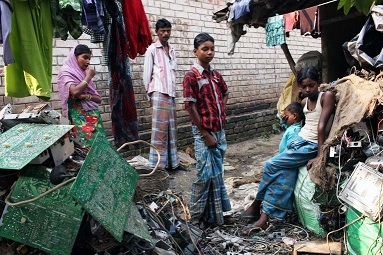
India’s mining industry is growing. New jobs, unskilled workers employed and untapped resources discovered. But it isn’t the substance of mining you would expect. I’m talking about urban mining. That is, the process of reclaiming materials from spent products, buildings and waste generated in the urban environment. It’s recycling the precious metals permeated in urban waste. Sounds appealing so far – a salvation for all that waste we guiltily expend. In fact its not just any waste, its that deleterious waste, in which we know little of its end – electronic waste.
Urban mining is a lucrative business as it is estimated 55 billion euros worth of raw materials lie in unused electronics worldwide. Up to 60 elements from the periodic table can be found in them including highly demanded minerals the world is currently running short on such as gold, copper, nickel and iron.
In 2016 the global quantity of e-waste was around 44.7 million metric tonnes (Mt) or 6.1 kg per inhabitant – equivalent to 4,500 Eiffel towers and by 2021 it is expected to grow the 55.5 Mt. It is hardly surprising considering India’s mass population and fast growing electronics industry that it has become the worlds 2nd largest consumer of phones and hence the worlds 4th largest e-waste polluter.
There are now over 1 million people in India employed in informal operations in the manual recycling process of e-waste and they are all eager for a share in the potential profit. While urban mining provides income earning opportunities for some of India’s poor, the process is highly problematic. Firsty, unscientific treatment (without any safety measures or even understanding the toxic materials) of e-waste such as burning, recycling and chemical digestion has calamitous effects on human health. Everyday workers deal with perilous toxic chemicals present in electronic products that have been found to cause serious and irreversible long term and short term damage, such as intergenerational brain damage, cancer, respiratory and skin disorders, immune system damage and muscle weakness – to only name a few. Secondly, as most of the electronic matter fails to decompose, there is significant air, water and soil pollution emitted, which in turn incurs negative health consequences to the broader community as well as the biodiversity.
It’s a grim picture of an unfortunate consequence of uneven development and absent regulation but it’s not to say that we should all give up our treasured technology because of its disastrous effects. A push has been made by way of producing electronic equipment with minimum toxicants, which some NGOs such as Toxics Link, have began activity pursuing. Since a 2003 European Union incentive to restrict the use of hazardous parts, the composition has become less deadly, albeit still harmful. More momentous is the international movement towards recycling e-waste with zero landfill under scientifically proven safe methodology. For most of the developed world, zero landfill is a reality but for India it remains a distant dream. Nonetheless, over recent years, Indian academics, scientists and NGO’s have been pressing the government to implement a zero landfill program to save lives. In response, the central waste management act has been amended and provisions such as the Extended Producer Responsibility has been mandated, yet policy is much inadequate and enforcement remains very limited.
In any case, awareness and pressuring the government for change seems to be the best viable action. Only under a proactive government that takes responsibility for the security of its people, will India be able to grow sustainability and inclusively. It’s not that poor workers wish to inhale toxic chemicals as a form of employment but rather there is no better option.
Reflections on ‘informalisation’ in the Indian economy
By Brendan Hancox

Among the many staggering facts, statistics and stories we have heard throughout our three weeks in India, one theme sticks out to me:‘Informalisation’ in the Indian economy. This continues to intrigue me with 92 per cent of the Indian workforce employed in the ‘informal’ sector. What does this mean? Well, strictly speaking, it means that the 92 per cent of Indian workers do not have a formal employment contract nor the legally enforceable benefits, securities and workplace protections that come with them. We could have learned this statistic from the confines of a lecture room back in Sydney, but one of the advantages of coming on a field school is getting a first-hand sense of how ‘informality’ manifests in the workplace as well as in the broader society.
To survive as a labourer in the Indian economy, you have to be flexible, nimble and hard-working. The streets of Mumbai or Hyderabad are buzzing with all sorts of sights and sounds, from the putt-putting of auto-rickshaws driven by self-employed auto-wallahs jostling to secure a ride, to street vendors and hawkers pushing food carts, and even hand-craftspeople, plying trades such as basket-weaving by the side of the road. From the open balcony of our seminar hall at the Tata Institute of Social Sciences in Mumbai, I see un-harnessed construction workers straddling the bamboo skeleton scaffolding of a mid-rise build site in the distance. I imagine they are seasonal migrants from the country, similar to the ones I have read about, who gather on street intersections each morning in search of casual day labour for several months of the year, driven to work informally and in unsafe conditions by a mix of desperation and opportunism. I can only wonder about other migrant labourers who I have read about but are completely hidden from view, such as the growing army of informally employed domestic workers – mostly women maids – servicing the homes of the Indian middle class.
Another thing you need to survive as a labourer in the Indian economy, so I’ve learnt, are social connections. Mediators and middlemen facilitate the movement of labour across the country, mostly from the countryside to the city. More generally, informal social linkages are essential in an economy where relations of trust, reciprocation and honour are more important for securing work than formal qualifications. My suspicion is that these social linkages help to explain the overwhelming dominance of ‘informalisation’ in the Indian labour market: promises and social sanctions act as substitutes for the legal protections associated with formal employment.
This is far from something to be optimistic about, however, if one appreciates how social and hence labour relations in India are infused by the caste system. Although it is illegal for employers to discriminate based on caste, the idea that certain jobs should be reserved for particular hereditarily defined social groups – or castes – still pervades the Indian milieu and effectively stymies social mobility. In this context, the social and informal networks that underwrite the informal economy are not some politically-neutral mechanism through which the labour market operates. On the contrary, they entrench the existing economic and social inequalities that are so palpable whenever one travels through a major Indian city. They are a mechanism through which the politics of caste are reinforced and reproduced.
So is formalism the way to go? Well, yes – all workers deserve decent working conditions, and state regulation of labour standards could be a way of enforcing anti-discrimination laws that already exist on paper. But the mind boggles at how such a dynamic, fast-paced and truly enormous labour market could be brought under the effective regulation of the state. Furthermore, understanding how entwined the labour market is with caste and informal social networks allows one to appreciate the enormity of the challenge: a fully fair and meritocratic labour market requires more than top-down policy. It requires a wholesale shift in the nature and structure of social relations – unfortunately something not likely to happen in the near future.
All good, dhal?
By Eliza Bicego
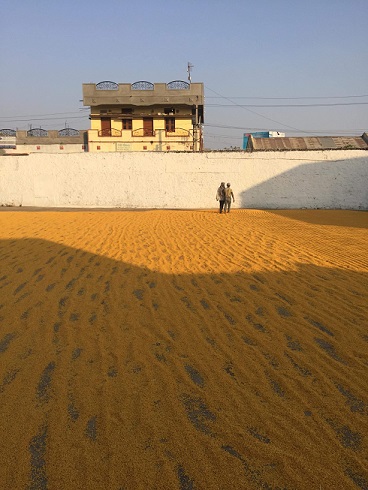
Everywhere we’ve gone in India, at every meal, there’s been dhal.
Demand for dhal in Karnataka and surrounding states is so high that in Gulbarga alone there are 325 dhal factories who all turn around approximately 100 tons of dhal a day. It was pretty fitting that we visited a factory which processes raw lentils, or dhal, into the core ingredient of the staple dish we’ve been enjoying. The factory turned a high profit and we discussed with the owner how business was usually pretty good; everyone always wants more dhal.
When we arrived at the factory we were greeted by a sea of yellow; the concrete of the large front courtyard was covered in dhal drying out and splitting in the sun. Later we saw men walking barefoot across the lentils in tandem, turning them to ensure even drying.
The workers at the factory were all migrants from Bangladesh or Nepal, or other states in India. These are season workers who often return home during the monsoon season when dahl production is halved. The workers live 20m from where they work and got the job often through family or community ties. Even though we were offered face masks to protect our lungs from the fine dust of production, none of the workers had anything more than a cloth they tied around their noses. They worked close to heavy industrial machinery in sandals and could collect 100 rupees/month for 2 months if they injured themselves while working.
The workers were mixed, men and women, and everyone worked 10 hours days. We were informed, however, that men were paid 400 rupees/day (equivalent of .80AUD/hour) and the women 300 rupees/day (.60AUD/hour). The women didn’t do the heavy work which explained the pay discrepancy but this stratification, spoken as if it were natural by the factory owner, was a clear manifestation of the deep gender divisions which run through most of Indian society.
The factory owner was an educated Indian businessman who spoke fluent English. He was from Rajasthan, although born in Karnataka where his family had been processing dhal since 1902. Heritage, culture and language are so tied to locality within India that this man had only ever been to Rajasthan twice but still identified strongly as being Rajasthani and spoke a language from his home state with his children. He had grown up on the factory floor, identifying the different grades of dhal and helping the workers to turn the lentils with his bare feet until he was old enough to take over the business.
Funny to see the lives and livelihoods and bare feet behind the food we’d been happily tucking into for the last three weeks.
Holy Cow….Dung
By Nicole Runck
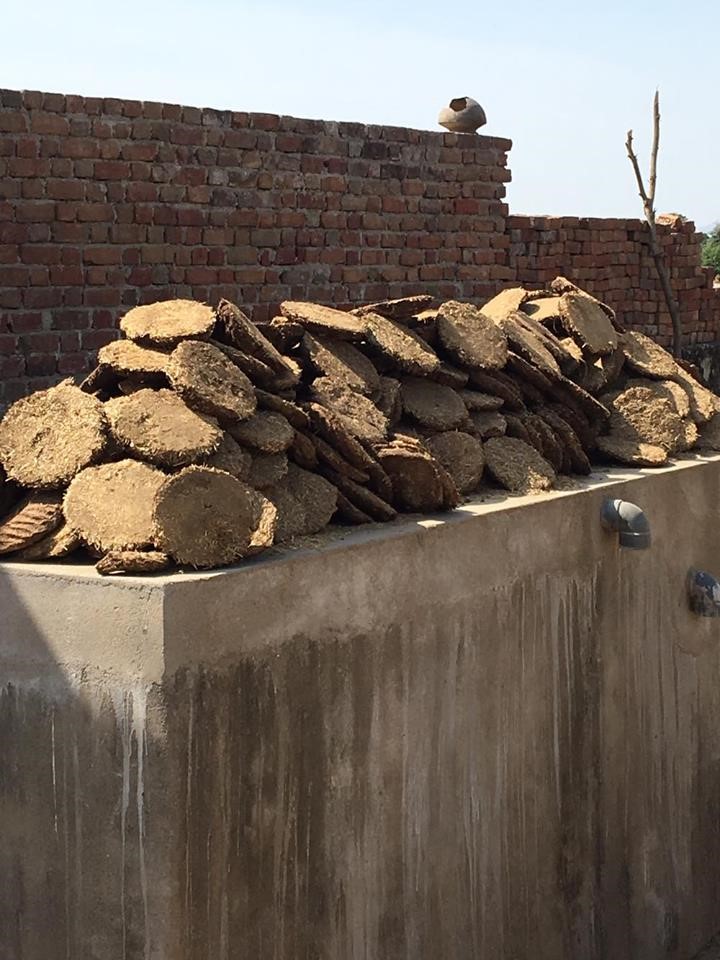
While driving to a rural village in the state of Rajasthan I pulled my curtain across to take in the surroundings. The landscape was dry, scattered with plots of green. The roadside supported a number of small shops, crowded with small groups of men gathered, drinking chai. The view from the bus was a fascinating glimpse at rural life in India, but there was one scene in particular that continued to grab my attention. And that was the piles and piles of round brown discs – cow dung patties.
Their Indian name (as I later learnt) is “goitha” and they are used by millions of people across India as a source of fuel for cooking. Women in rural villages are in charge of collecting faeces from bovine species, mixing it with hay, moulding into discs and laying them out to dry. Once dry they are ready to fuel stoves and fires all year round.
Once we arrived in the rural village and spoke with the local women’s group we learned that almost every single household had an LPG connection in their home. But most still preferred to cook with wood or cow dung because it makes the food taste better. Yeah, so apparently cow dung makes food taste great, so much so that there is now an online market for dung patties from city dwellers wanting a taste and smell of their rural childhood!
At first glance the use of cow dung as a source of fuel seems greatly sustainable not to mention affordable. The problem is the negative affect of these more traditional sources of fuel on household health.
Indoor pollution is recorded to be responsible for around a million deaths every year in India. Burning solid fuels- such as cow dung creates smoke particles that are damaging to human health. And since almost all cooking happens in the house, every day millions of Indians are exposed to harmful pollutants in the quest for sustenance. In fact, up to half of premature deaths among children can be linked to the inhalation of particle matter.
The Indian government is responding to the issue undertaking a large roll out of LPG to rural households and subsidising the cost of gas. So why do so many Indian families still opt for traditional forms of fuel?
Of course the answer is not simple, and can definitely be equated to the cost associated with LPG. But as one scholar at the TISS/USyd workshop on ‘Well-being and Social Welfare in 21st Century India’ argued, education is a key factor preventing rural communities from using their LPG connections. The government is not investing in the knowledge dissemination that would inform rural communities of the health benefits of switching to other fuel sources. This highlighted the importance of government led initiatives such as LPG provisions to include educational programs to ensure proper implementation and better health outcomes.
A Walk Through History
By Janine Farah
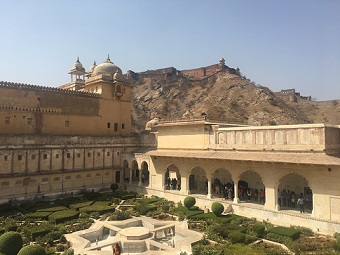
Echoes of the British Empire can be seen in many different ways within India. From television shows to restaurant chains to the education system. However, if these remnants make you think India’s culture and history have been repressed or erased, you would be mistaken.
During this field school we had the incredible opportunity to visit the Amber Fort and see firsthand the rich history and culture that India has to offer. The fort stands in grandiose style over a hilltop and is a feast for anyone who values a trip to the past. This rambling Amber Palace offers a curious blend of Muslim and Hindu architectural design. This is due to political alliances between the Rajput rulers and the Mughals, two different clans, during the medieval era. An exhibition of the yester years, this site is a testament to the ingenuity of the artisans of ancient time.
This tour taught us that Man Singh, the commander of Emperor Akbar, started the fort in 1592 and from the 16th century up to the foundation of Jaipur in 1727 the Amber Fort was used by the Rajput’s as a place of residence as well as defence purposes. The Rajput’s were Hindu rulers who had excellent knowledge of ancient building methods. They build the fort in a defensive architectural style by utilizing the natural features of the site. Not only was this fort used for defensive purposes but is also displayed the honor and wealth of the Maharajas. As we walked past the mighty walls and picturesque gardens we were transported to a time of royalty, grandeur and splendour. Marble and stone line every corner; elaborate paintings and stonemason’s work cover the walls.
Walking through this fort I began to think about the importance of conservation of such significant cultural and historical sites. A tour guide walking ahead of us said something that stood out to me. He said ‘The identity of India is linked with our past.’ Sites like the Amber Fort represent a part of Indian cultural identity that means more than a pretty place for tourists to visit. During the British rule, no major construction work was done in the Amber Fort and their colonization marked the beginning of tourism for many European travellers. The amount of tourists led to a significant amount of stress for the site and for a long time the Amber Fort faced neglect. 2005 saw the first conservation initiative and in 2008 it was added to the World Monument Watch List.
This remarkable place is just one of the many examples of Indian history and culture. Walking through India and seeing its architecture and design, it is clear that while this country may have retained certain aspects of British influence, the richness of its culture is prevalent everywhere you look. The cobbled paths and marble sandstone of the Amber Fort and its rich history reflect the heart of Indian art and traditions. It’s values and cultural rituals are followed even to this day and this palace is a proud and elegant site to commemorate Indian’s fascinating past.

